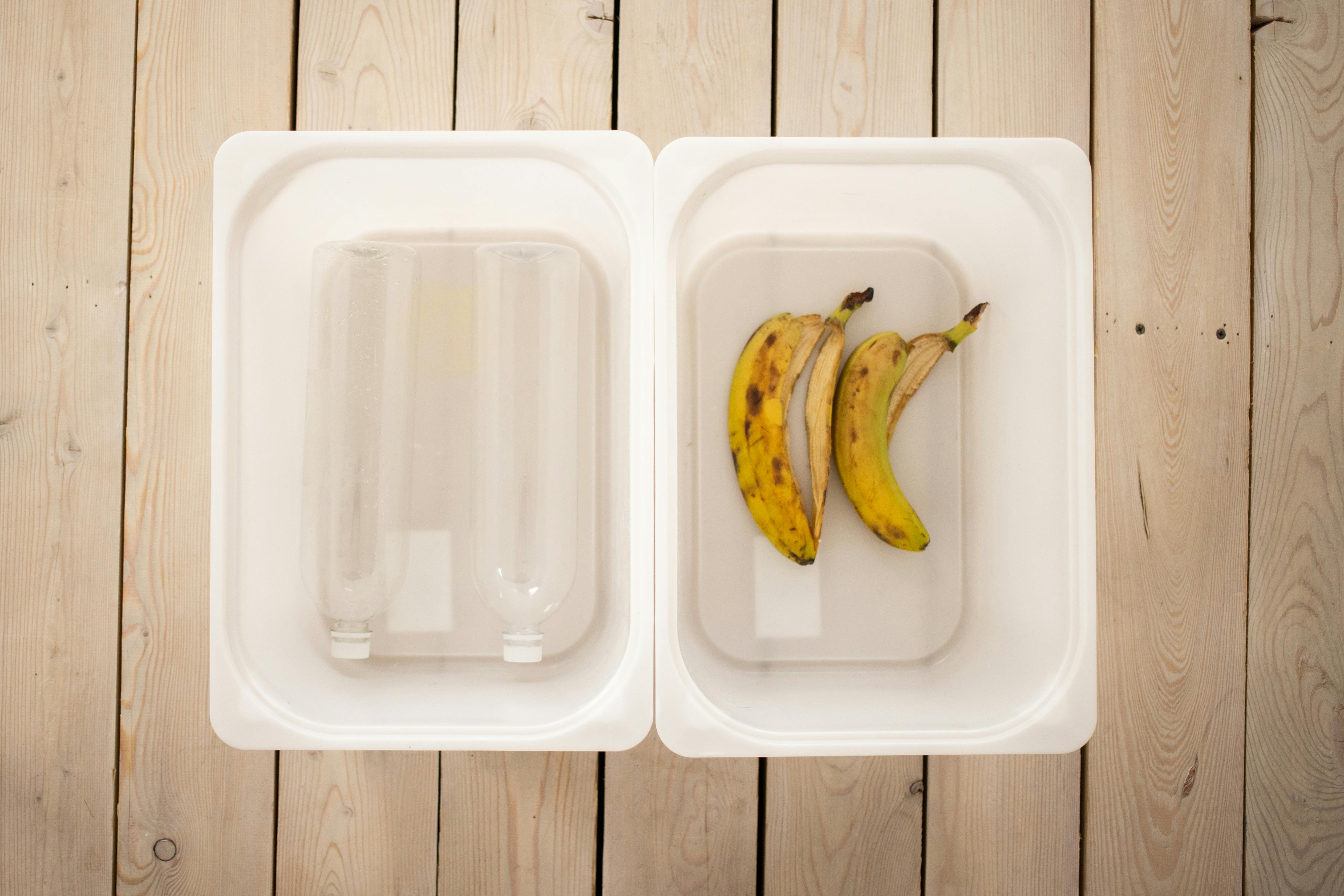Distillation is a process used to separate a solvent from a solute. It works by heating the mixture and condensing the vapor back into liquid form. The vapor will contain the more volatile components of the mixture, while the liquid that remains behind will contain the less volatile components. By separating these components, it is possible to obtain pure samples of both the solvent and solute.Distillation is a process of separating the components or substances from a liquid mixture by using selective boiling and condensation. Distillation is used to purify liquids, separate mixtures and to recover or separate useful components from a liquid mixture.
How Does Distillation Work?
Distillation is a process used to separate components of different boiling points in a liquid mixture. It uses the fact that different components of the liquid have different boiling points, and when heated, they evaporate at their respective temperatures. This vapor is then condensed back into a liquid, leaving the impurities behind. Distillation is an important process used in various industries such as oil refineries, alcohol production, and water purification.
The distillation process begins by heating the liquid mixture to a temperature higher than any of its component’s boiling point. As the temperature rises, some of the components will begin to evaporate and rise with the heated air. These vapors are then cooled and condensed back into a liquid form which is then collected in a separate container. The remaining liquid in the original container now contains fewer components than before as some were removed through evaporation.
This process can be repeated multiple times depending on how pure of a product is desired. It can also be tailored to remove specific components from the mixture depending on their boiling point or other characteristics such as solubility or vapor pressure. Distillation is an effective way to separate liquids from solids or other impurities and can be used for many applications including producing potable water from seawater or producing fuel from crude oil.
Advantages of Distillation
Distillation is one of the most important and widely used processes in chemical engineering. It has many advantages over other methods of separation, including being able to separate a wide range of substances with different boiling points and being relatively inexpensive. Additionally, it can be used for purification and concentration of liquids, volatile compounds, and even gases. The process of distillation works by heating a liquid or a vapor until it becomes vaporized and then collecting the vaporized components as they rise from the boiling mixture. This allows for the separation and purification of substances that have different boiling points. Furthermore, distillation can be used to separate mixtures that would not be easily separated by other means such as filtration or crystallization.
Another advantage of distillation is that it can produce purer products than other methods because there is no physical contact between the components during the process. This means that contamination from one substance to another is avoided, which is especially important when dealing with pharmaceuticals or chemicals that are sensitive to contamination. Additionally, distillation does not require any additional chemicals or solvents for its functioning, making it an environmentally friendly process. And since most modern distillation systems are automated, there is no need for manual operation which further reduces the amount of human intervention required in the process.
Finally, distillation offers great flexibility in terms of product quality control as it allows for easy adjustment to different operating conditions such as temperature and pressure depending on what type of product is desired. This makes it ideal for applications where multiple products need to be produced from a single raw material stream. In summary, distillation offers numerous advantages over other separation processes due to its ability to separate a wide range of substances with different boiling points while maintaining product purity and minimizing additional costs associated with operation.
Distillation
Distillation is a process of separating components from a liquid mixture through vaporization and condensation. It is used in a wide variety of applications, from purifying water to refining fuels. There are many different types of distillation, each with its own advantages and disadvantages.
Fractional Distillation
Fractional distillation is the most commonly used type of distillation and is used to separate compounds based on their boiling points. This process involves heating the mixture until the components vaporize, then cooling them so they can condense back into liquid form. The resulting liquid is then collected in fractions based on their boiling point. This type of distillation is often used to produce high-purity products, such as fuel or pharmaceuticals.
Steam Distillation
Steam distillation is similar to fractional distillation, but instead of using heat to vaporize the components, it uses steam. This allows for more gentle separation of components that have similar boiling points or are too fragile for direct heating. Steam distillation also has the advantage of being able to separate volatile compounds that would otherwise be destroyed by direct heating.
Vacuum Distillation
Vacuum distillation is a type of fractional distillation that uses reduced pressure instead of heat to separate components from a liquid mixture. This allows for lower temperatures than conventional fractional distillation, which can be beneficial when separating delicate compounds or when dealing with substances that degrade at higher temperatures.
Molecular Distillation
Molecular distillation is a type of vacuum distillation that uses very low pressures and high temperatures to separate components from a liquid mixture on a molecular level. It is often used when other types of distillations are not suitable due to the presence of volatile or thermally unstable compounds in the mixture. Molecular distillations can also be used to purify proteins and other biochemicals as well as petroleum products and organic solvents.
Separating Solvent from Solute using Distillation
Distillation is a process used to separate a liquid solvent from a solution. This process works by heating the mixture to its boiling point, and as it starts to boil, the vapor is collected and cooled. The condensation that results from cooling the vapor contains only the solvent, leaving behind the solute in the original container. Through this method, it is possible to isolate and collect pure solvents from mixtures.
Distillation requires that both components of the mixture have different boiling points. If they are too close together, then distillation cannot be used. The mixture must also be heated in such a way that only one component boils at a time, otherwise both will evaporate into vapor form at the same time and cannot be separated easily.
When separating two liquids with very similar properties, fractional distillation can be used instead of ordinary distillation. This technique involves repeatedly condensing and re-boiling the mixture until all of one component is evaporated away. Fractional distillation takes more time than ordinary distillation but can be used for liquids with similar boiling points that would not normally separate from each other using ordinary distillation techniques.

Components of a Distillation Apparatus
A distillation apparatus is composed of several components, each playing a vital role in the distillation process. The main components include a still pot, condenser, parrot, and receiver. The still pot is the main container where the distillation takes place. It usually consists of a round bottom flask with an attached condenser that serves to cool the vapors produced during distillation. A parrot is an optional component that can be used to measure the temperature of the boiling liquid during the process. Lastly, a receiver is used to collect and store the distilled liquid for further use.
It is important to ensure that all components of a distillation apparatus are made from high-quality materials that are resistant to corrosion and other forms of damage. Furthermore, it is important to ensure that all parts are properly connected and sealed so as to prevent any vapor or liquid leakage during the process. All components should also be checked for proper functioning before starting any distillation experiment.
Factors Affecting Efficiency of Distillation Separation
Distillation separation is a process used to separate different components of a liquid mixture. It is an important industrial process used in the production of chemicals, food, pharmaceuticals and many other products. The efficiency of distillation depends on several factors such as composition of the feed mixture, relative volatility of the components, number of theoretical plates, reflux ratio and pressure.
The composition of the feed mixture affects the efficiency of distillation separation as certain components are more volatile than others. The relative volatility is a measure that indicates how easily the components can be separated by distillation. Higher relative volatilities result in higher efficiencies while lower volatilities result in lower efficiencies.
The number of theoretical plates or stages also affects the efficiency. The greater the number of stages, the more efficient the separation process will be. With increased stages, more components can be separated from each other resulting in higher purity products.
The reflux ratio is another factor that affects distillation efficiency. The reflux ratio is defined as the ratio between the liquid returning to condenser and that passing to receiver per unit time. Higher reflux ratios result in higher efficiencies and vice versa.
Lastly, pressure also plays an important role in determining distillation efficiency as it affects vapor-liquid equilibrium relationships and vapor pressures at each stage within a column. Higher pressures increase volatility which results in improved efficiencies whereas lower pressures reduce volatility leading to lower efficiencies.
Common Applications of Distillation Separation
Distillation separation is a process that is commonly used in the chemical, pharmaceutical, and food industries to separate mixtures of liquids into their individual components. The process involves heating and cooling the mixture until the components separate. The resulting solution can then be collected as either a liquid or solid. Distillation separation is used in a variety of applications, including:
1. Oil Refining: Distillation is often used in the refining process of oil and gas. In this process, fractions of hydrocarbons are separated from crude oil based on their boiling points. This separation is achieved by heating the crude oil until it boils and then condensing the vapors that are produced.
2. Desalination: Distillation can also be used to separate salt from seawater or brackish water. The water is heated until it vaporizes, leaving behind the salt crystals which can then be removed. This process is commonly used to produce fresh drinking water from saltwater sources.
3. Herbal Extractions: Distillation can also be used to extract essential oils from plants such as lavender, peppermint, and eucalyptus. In this process, heat is applied to the plant material in order to vaporize its volatile compounds which can then be condensed and collected.
4. Alcoholic Beverages: Distillation is also used in the production of alcoholic beverages such as whiskey and vodka from fermented grains or fruits. In this process, the fermented mixture is heated until it boils and then cooled so that only certain components remain in liquid form while others become solids or gases.
5. Perfume Production: Distillation can also be used to create scents for perfumes by extracting compounds from natural materials such as flowers or spices. In this process, heat is applied to the material which vaporizes its aromatic compounds which can then be collected for use in fragrances.
Overall, distillation separation has many uses across different industries including oil refining, desalination, herbal extractions, alcoholic beverages production, and perfume production. It has become an invaluable tool in these industries due to its ability to separate mixtures into their individual components with great precision and accuracy.

Conclusion
Distillation is an effective technique for separating a solvent from a solute. It works by boiling the solution and condensing the vapors, which allows for the collection of the desired solvent. The process is relatively simple and requires minimal equipment, making it ideal for use in a variety of laboratory and industrial applications. It is also highly efficient, allowing for large quantities of solvent to be extracted quickly and with minimal waste. With its ease of use and high efficiency, distillation is an invaluable tool in many situations where solvents need to be separated from their solutes.
Overall, distillation is an effective method for separating a solvent from its solute. This separation process can be used in numerous laboratory or industrial settings, as it requires minimal equipment and produces excellent results with minimal waste. As such, distillation should be considered as an option whenever a solvent needs to be separated from its solute.

